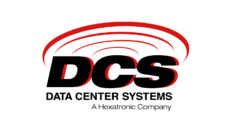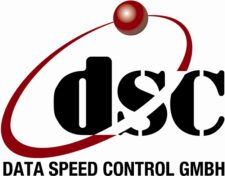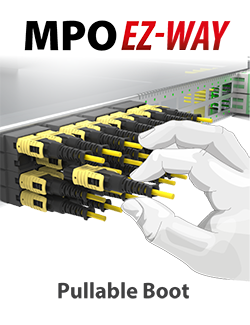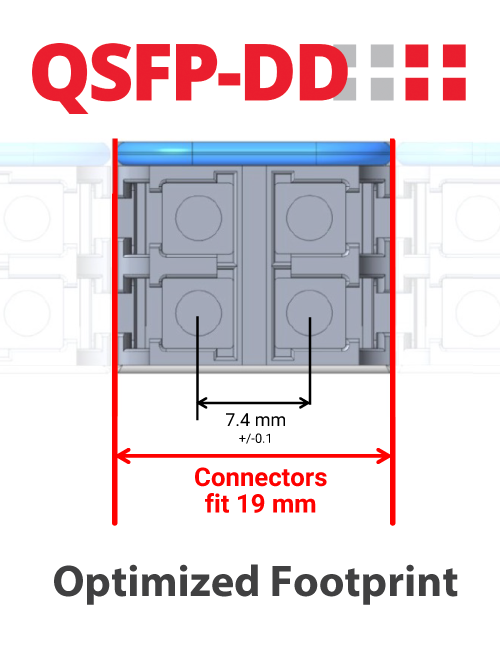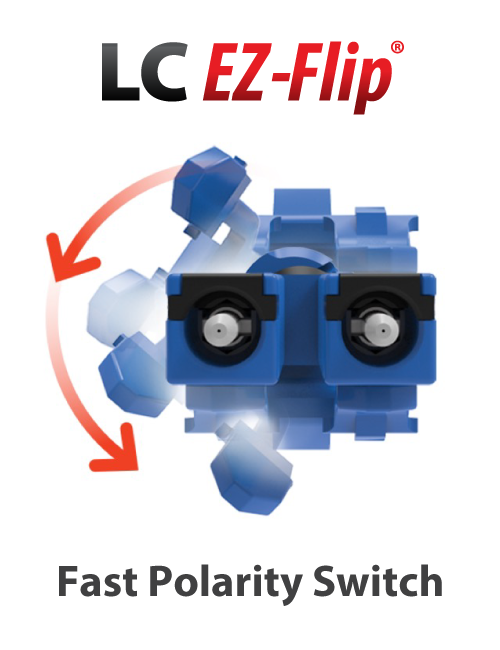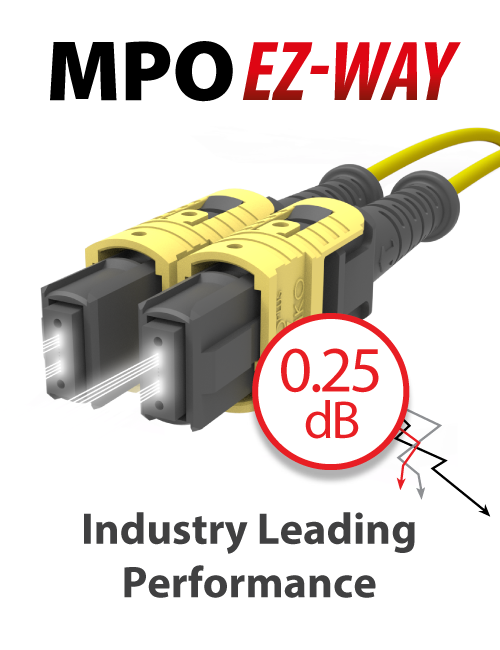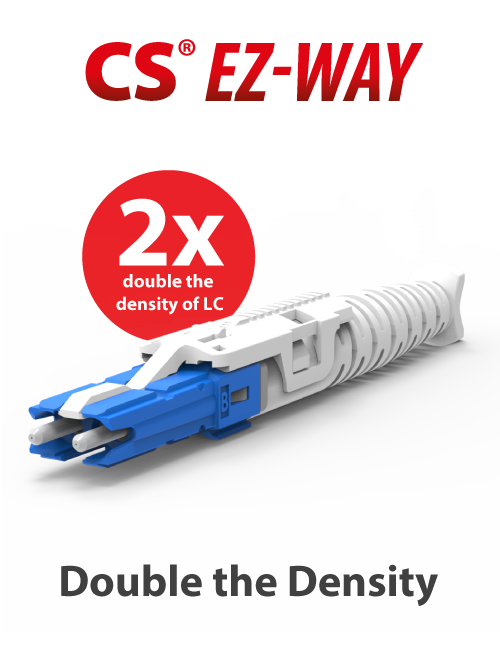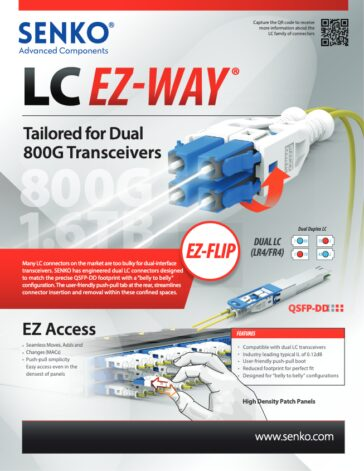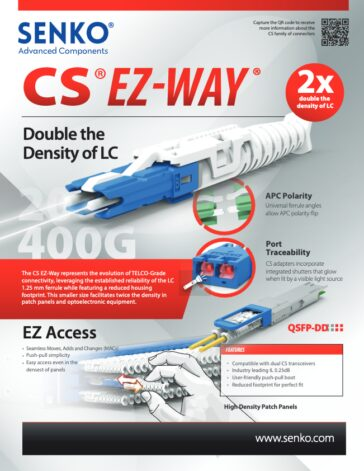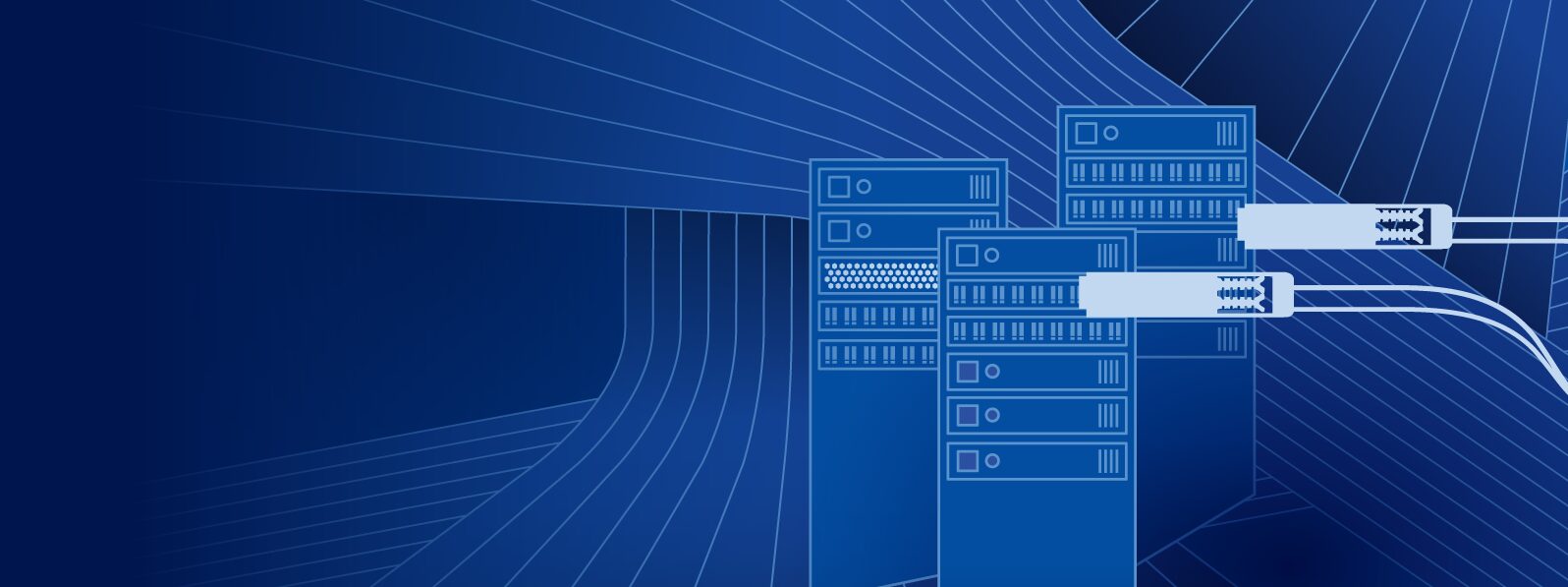
接続
イージーウェイ

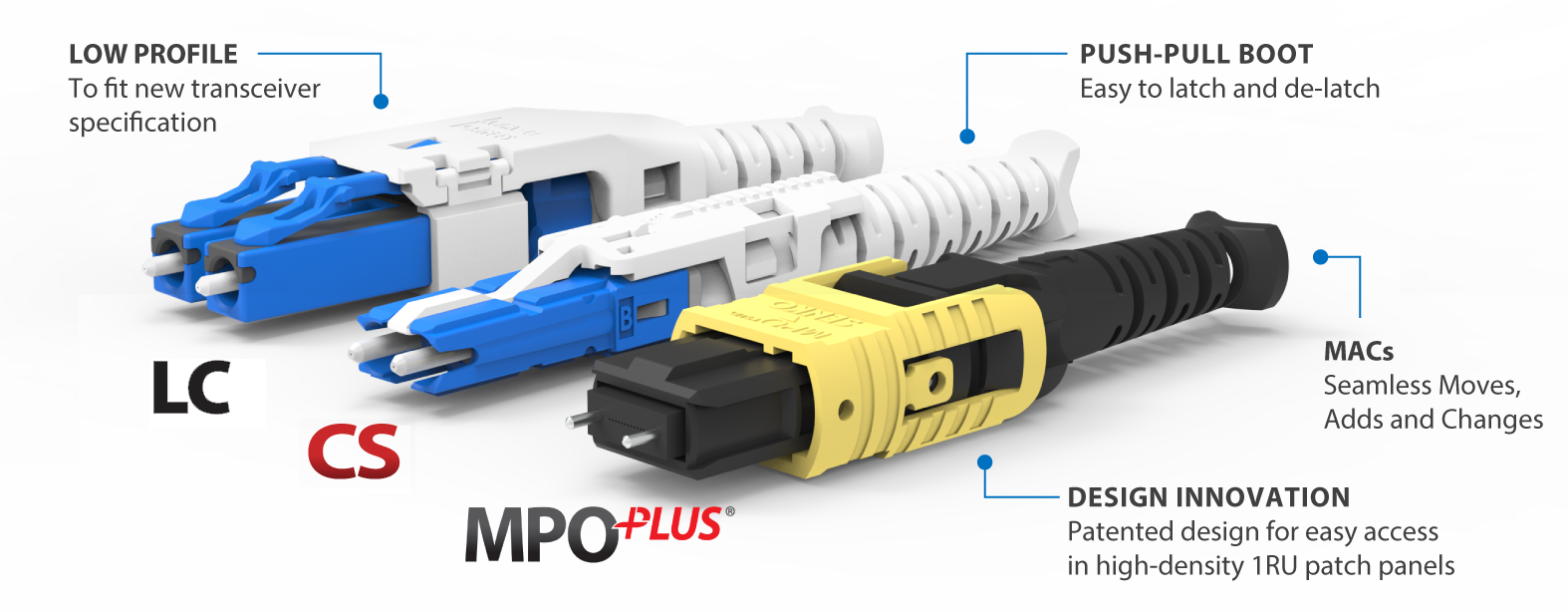
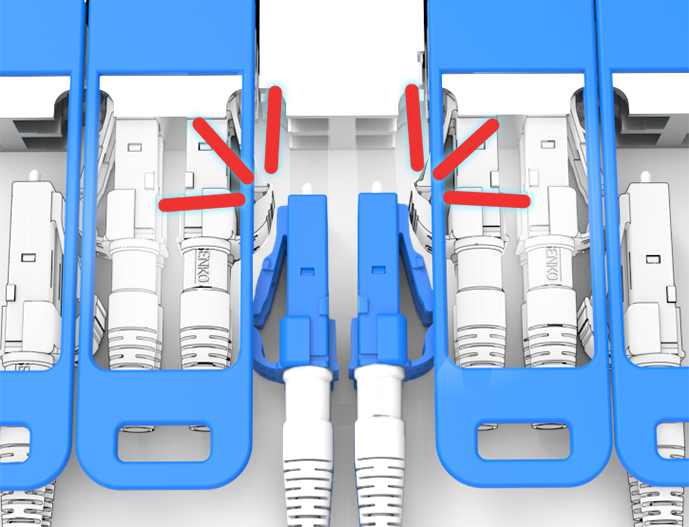
課題
高密度環境では、特にデュアルMPOとデュアルLC接続を必要とする新しいベリー・ツー・ベリー・トランシーバーが大きな課題に直面します。従来のコネクターは、トランシーバーのフットプリントを超えることが多く、干渉やアクセシビリティの問題を引き起こしていました。SENKOのEZ-Wayコネクターは、最適化されたフットプリントと強化されたプッシュプルブーツにより、この問題を解決し、QSFP-DDおよびOSFPトランシーバーのフットプリント内に収まります。この設計により、迅速で容易なアクセスが保証され、スペース効率が最大化されるため、EZ-Wayシリーズは、高密度のスイッチや高密度アプリケーションに最適です。
EZ-WAYの特徴
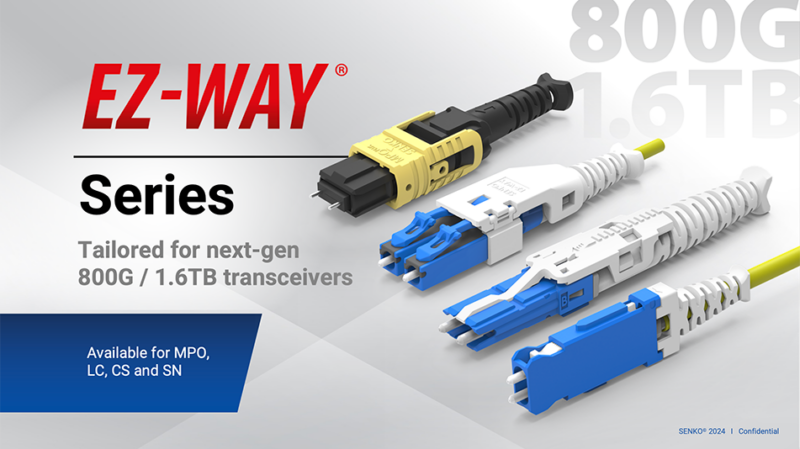
注目のソリューション
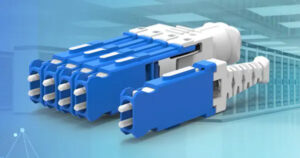
SNシリーズのページ
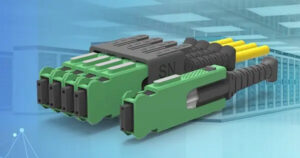
SN-MTシリーズページ
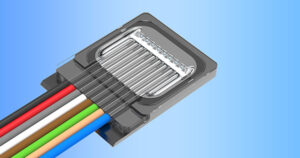
金属マイクロオプティクス
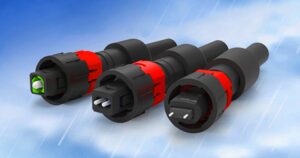
IPシリーズページ
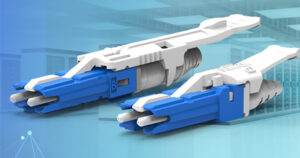
CSシリーズページ
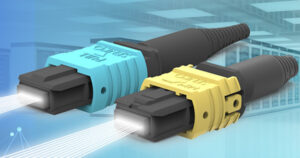
MPOシリーズのページ
EZ-ウェイ・リソース
- デュアルLCまたはデュアルMPO接続のベリー・ツー・ベリー・トランシーバーEZ-Wayコネクターは、デュアルLCまたはデュアルMPO接続の800Gベリー-ツー-ベリートランシーバー構成をサポートするよう特別に設計されている。コンパクトな設計とプルアブルブートにより、高密度セットアップでの効率的で簡単な接続が保証され、性能を最適化し、設置時間を最小限に抑えます。
- フィンガーアクセス制限付き高密度パッチパネルEZ-Wayコネクターは、高密度パッチパネルのようなスペースが限られ、アクセスが制限される環境において、実用的なソリューションを提供します。人間工学に基づいた設計により、指のアクセスが制限された狭いスペースでも取り扱いと接続が容易になり、全体的な作業効率が向上します。
- DC内トランクケーブルデータセンター内のトランクケーブル用に、EZ-Wayコネクターはコンパクトで使いやすいMPO接続を提供します。最適化されたフットプリントとプルアブルブートにより、迅速かつ容易なアクセスを必要とするシナリオに最適で、データセンター内の信頼性の高い接続性と合理化されたケーブル管理を保証します。
- データセンター相互接続EZ-Wayコネクターは、データセンター間接続、特にデータセンターが相互接続されるメッシュ型トポロジーにも最適です。堅牢な設計と高密度互換性により、データセンター間のシームレスで効率的な接続を実現し、高速データ転送をサポートしてネットワーク全体のパフォーマンスを高めます。
SN-MT16 Uniboot 2CHコネクターとは何ですか?
SN-MT16 Uniboot 2CHコネクターは、データセンター相互接続用に設計された高密度光ファイバーコネクターで、コンパクトで効率的な設計が特徴です。
SN-MT16 Uniboot 2CHコネクターとMPOコネクターのサイズ比較は?
SN-MT16 Uniboot 2CHコネクターは、MPOコネクターより2.7倍小さく、スペース効率に優れています。
SN-MT16 Uniboot 2CHコネクターの構造は?
2つのSN-MTコネクターが1つのプッシュプルブートで接続されています。
標準的なSN-MTコネクタのフェルールには何本のファイバーがありますか?
標準的なSN-MTコネクタのフェルールには、1列に16本のファイバーがある。
SN-MT16コネクタのフェルール内部で使用されているファイバーサイズを教えてください。
フェルールの内側に使用されているファイバーは200ミクロンで、高密度ローラブルリボンケーブルと同様である。
SN-MT16 Uniboot 2CHコネクターの色は何色ですか?
コネクタは緑色で、APC (Angled Physical Contact) コネクタであることを示す。
SN-MT16 Uniboot 2CHコネクターには異なるバージョンがありますか?
はい、ピンのあるオス型とピンのないメス型があります。
SN-MT16 Uniboot 2CHコネクターの最大挿入損失(IL)性能は?
最大挿入損失は0.35dBである。
SN-MT Unibootコネクタには、異なるチャンネルオプションがありますか?
はい、2チャンネルと4チャンネルのSN-MT Unibootコネクターがあります。
SN-MT16 Uniboot 2CHコネクタの主な用途は何ですか?
データセンター相互接続に使用され、データセンターはメッシュトポロジーで何千本ものファイバーで接続される。
SN-MT16 Uniboot 2CHコネクターは、どのようにケーブルの散乱を減らすのですか?
背面に1本のケーブルを装備し、50%のケーブル数を削減。
SN-MT16 Uniboot 2CHコネクタの正しいアライメントはどのように確保されますか? このコネクターは、上部に幅の広いキー、下部に幅の狭いキーがあり、アダプターに正しくアライメントできるようになっている。
なぜSN-MT16は400Gと800Gのデータレートに適しているのですか?
その16ファイバー構成は、トランシーバーで8本または16本のファイバーをサポートし、これらの高速データ転送に理想的です。
SN-MT16 Uniboot 2CH コネクターは、標準的なデータセンターのダクトを通過できますか?
そう、そのコンパクトなサイズは、データセンター・ビル間の4インチ・ダクトに簡単に通すことができる。
SN-MT16のデザインは、トランクケーブルのテールやパッチング時間にどのような影響を与えますか?
この設計により、50%はトランク・ケーブルのテール数を減らし、パッチングの時間を短縮した。
SN-MT16 Uniboot 2CHコネクタを使用した場合、パッチパネルでの最大密度はどの程度になりますか?
1RUあたり最大3456本のファイバー密度を提供し、108個のSN-MT Uniboot 2CHコネクターを収容します。
ハイパースケールのデータセンター事業者がSN-MT16 Uniboot 2CHコネクタを好む理由は?
工場で組み立てられ、テストされるため、熟練した融着接続チームとその設備と時間の必要性が軽減されます。
SN-MT16 Uniboot 2CHコネクターは導入しやすいですか?
そう、その設計は配備を簡素化し、大規模なトレーニングや専門的なツールの必要性を最小限に抑える。
SN-MT16 Uniboot 2CHコネクタをデータセンターで使用する主なメリットは何ですか?
高密度、配備時間の短縮、設置の容易さ、高データレートとの互換性を提供する。
SN-MT16 Uniboot 2CHコネクタは、データセンターの効率をどのように向上させますか?
ケーブルの乱雑さを減らし、アライメントを簡素化し、高いデータレートをサポートすることで、データセンター全体の効率とパフォーマンスを向上させます。











